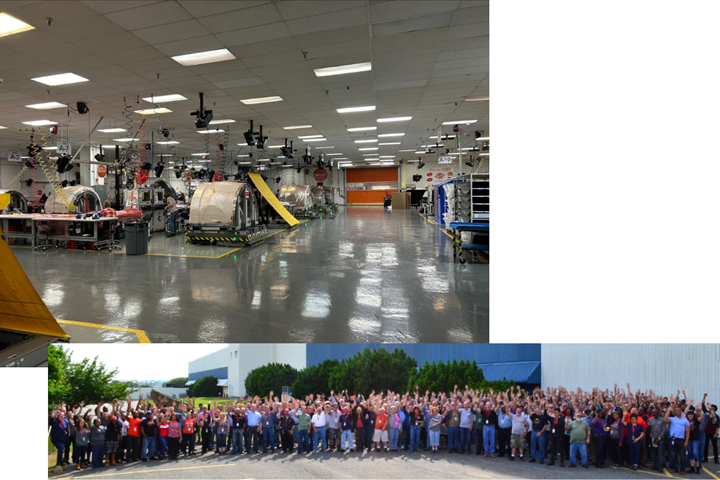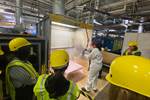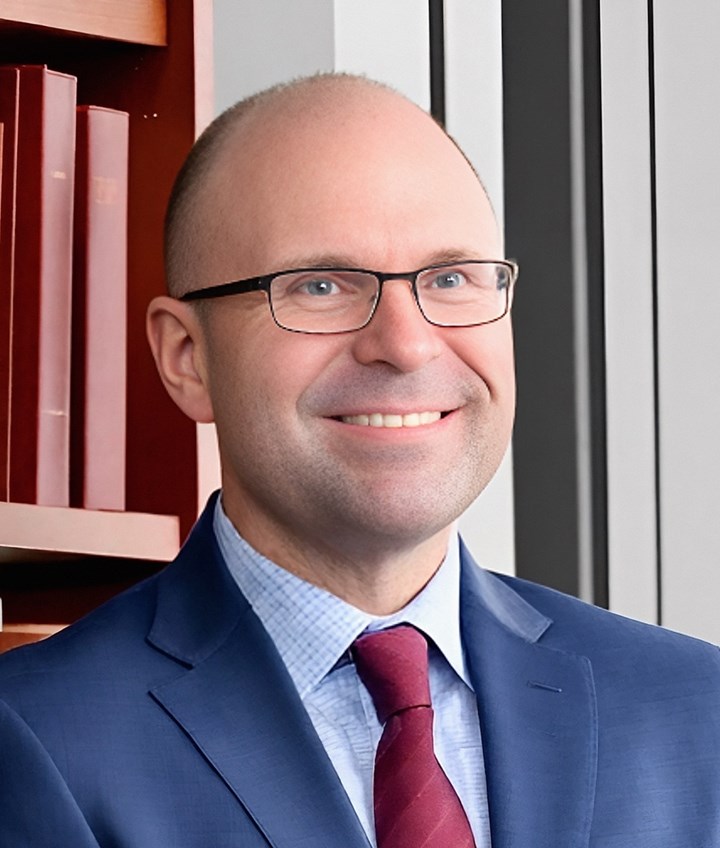Reducing accidental separator inclusion in prepreg layup
ST Engineering MRAS discusses the importance of addressing human factors to reduce separator inclusion in bonded structures.

Photo Credit: ST Engineering, Middle River Aerostructure Systems (MRAS).
The aerospace industry is a highly demanding field, requiring the manufacturing of precision components that meet stringent safety standards. In this rigorous environment, human error can have significant consequences. One of the ongoing challenges the field faces is the accidental inclusion of separators. When creating kits of prepreg plies for composite layups, separators are pieces of plastic sheeting used to protect the surface of each ply. If not removed properly during layup, it can become a foreign object in the finished part, compromising its structural integrity and potentially causing damage to the aircraft.
Historically, separator inclusion has been treated as a workplace issue. Thus, at ST Engineering MRAS (Baltimore, Md., U.S.), we tried using signage to increase employee awareness about the issue. We also installed cameras to help monitor accidental separator inclusion. However, both strategies merely increased costs while returning minimal results.
We then decided to try addressing the human factors. Humans inherently make mistakes. Understanding this led to a new approach rooted in the belief that a psychologically safe and inclusive environment is essential for fostering a highly engaged and productive workforce more attuned to solving issues like separator inclusion.
Cultivating psychological safety
Psychological safety is the belief that people should not be punished or humiliated for speaking up, taking risks or making mistakes. Team members should feel comfortable sharing ideas, asking questions and admitting their mistakes without fear or reprisal. To foster this inclusive workplace culture, we made four key changes.
First, to improve inclusive safety, we encouraged team building activities and group lunches to foster open communication and camaraderie. We also used internal surveys to help everyone feel comfortable sharing their opinions. We found these strategies helped craft a greater sense of belonging and ownership.
To address learning safety, we started running regular workshops for staff to exchange knowledge and expertise. Whenever a quality defect arises, team leaders now run a session on how to avoid the issue. We also incorporated YouTube-style videos in our training processes, more adapted to new learning styles.
When trying to improve contribution safety, we were inspired by The Pixar Braintrust. Fostering creativity through candor, the Braintrust is a group of directors at the Pixar movie studio who brainstorm together when one needs assistance. We replicated this format by ensuring a horizontal hierarchy during creative sessions. MRAS also brought in daily quality meetings run by volunteers to conceptualize innovative ideas to address any ongoing issues. Everyone has something valuable to contribute, regardless of experience or seniority, and bringing a variety of perspectives to the table often means problems are addressed more efficiently.
Effective leadership starts by understanding that we are all human.
In addition to helping people feel comfortable contributing, we also needed to make sure everyone felt safe to challenge bad decisions. Fostering such an open dialogue between staff and leadership is essential to creating a learning environment based on mutual respect.
After implementing these strategies, we have seen a surge in innovation and a heightened sense of ownership among the workforce. We have also found individuals feel more comfortable admitting to mistakes which meant we were able to take a more proactive approach to reducing separator inclusion.
Addressing separator inclusion
According to the organizational psychologist Kurt Lewin, behavior is the function of a person in their environment. Having improved the human element of the workplace, we now needed to adjust the environment. We did this through implementing several processes which broke the flow state of working — when mistakes would most likely occur — and encouraged closer attention to quality.
After each stage of layup, separators are now counted and bagged to ensure they are removed properly. We found having a visual confirmation helped to prevent oversights. There is also a mandatory documented signoff to improve traceability of mistakes.
We then brought in secondary verification. Humans are more likely to maintain a higher attention to detail if they know someone will be checking their work. Thus, a secondary operator verifies the separator count to ensure accuracy. Then, five times a week, at the end of each day, we pull a random bag to recheck the separator count.
If the count is off at any point in this process, or someone notices they made a mistake during the layup, progress is stopped immediately until the separator is found. We encourage people to report mistakes so we can find and remove any missing separators as soon as possible. Through documentation, we are also able to assess if any individuals need further support or training. Throughout this process, we emphasize that progress and learning are key to attaining our goals as a team; thus, we maintain positive reinforcement for reporting mistakes and signing on for support and training.
Continuous monitoring and improvement
We first implemented the above processes on our A-3 thrust reverser line. Having achieved resounding success, we leveraged the system throughout our entire bonding process. We’ve since seen a 98% reduction in separator inclusion. To further enhance this improvement, MRAS analyzes data from quality audits, process logs and customer feedback to monitor trends in separator-related defects. Additionally, by fostering an open and communicative environment within the workplace, we continue to learn about the underlying causes of separator inclusion and provide necessary training to all employees.
Effective leadership starts by understanding that we are all human. Mistakes will always be a natural part of any human-led process. Businesses need to adapt their processes to encourage safety and honesty so the impact of mistakes can be mitigated. By creating a psychologically safe environment at MRAS and working with our teams as key sources of knowledge and expertise, we have been able to achieve a culture of innovation and excellence which has translated into tangible results.
About the Author
Paul G. Hylenski, Jr.
Paul G. Hylenski, Jr. is an experienced leader in the aerospace manufacturing industry, with more than 15 years of expertise managing various product lines. Blending industrial acumen and thought leadership, Hylsenski is recognized for significant contributions in error mitigation and management strategies. Paul currently works for ST Engineering at Middle River Aerostructure Systems (MRAS, Baltimore, Md., U.S.). He is also an author with notable works including “Error-Proofing Humans,” which delves into human factors and error prevention in industrial settings, and his latest book, “The Evolution of Leadership,” which discusses how leaders can use AI in organizations with transparency and fairness to cultivate continuous learning and adaptability.
Related Content
Plant tour: Joby Aviation, Marina, Calif., U.S.
As the advanced air mobility market begins to take shape, market leader Joby Aviation works to industrialize composites manufacturing for its first-generation, composites-intensive, all-electric air taxi.
Read MoreInfinite Composites: Type V tanks for space, hydrogen, automotive and more
After a decade of proving its linerless, weight-saving composite tanks with NASA and more than 30 aerospace companies, this CryoSphere pioneer is scaling for growth in commercial space and sustainable transportation on Earth.
Read MoreCombining multifunctional thermoplastic composites, additive manufacturing for next-gen airframe structures
The DOMMINIO project combines AFP with 3D printed gyroid cores, embedded SHM sensors and smart materials for induction-driven disassembly of parts at end of life.
Read MoreBio-based acrylonitrile for carbon fiber manufacture
The quest for a sustainable source of acrylonitrile for carbon fiber manufacture has made the leap from the lab to the market.
Read MoreRead Next
Clogging the brain drain: Growing the composites workforce in a pandemic era
As Baby Boomers retire and high school and college graduates forestall their entry into the workforce, composites fabricators need to get creative to close the gap.
Read MoreWomen in the Composites Industry brings together women for networking, educational opportunities
Aiming to support the growth of women in this industry, the WCI industry group and its partners recently held its first live training event hosted by Owens Corning.
Read More“Structured air” TPS safeguards composite structures
Powered by an 85% air/15% pure polyimide aerogel, Blueshift’s novel material system protects structures during transient thermal events from -200°C to beyond 2400°C for rockets, battery boxes and more.
Read More





















